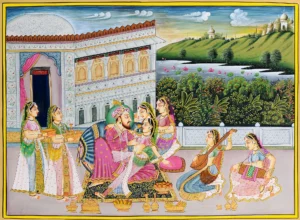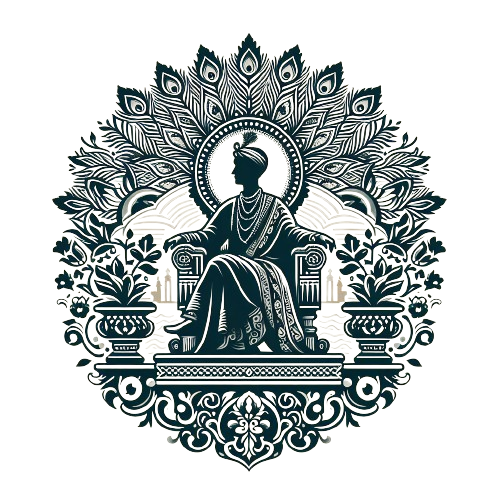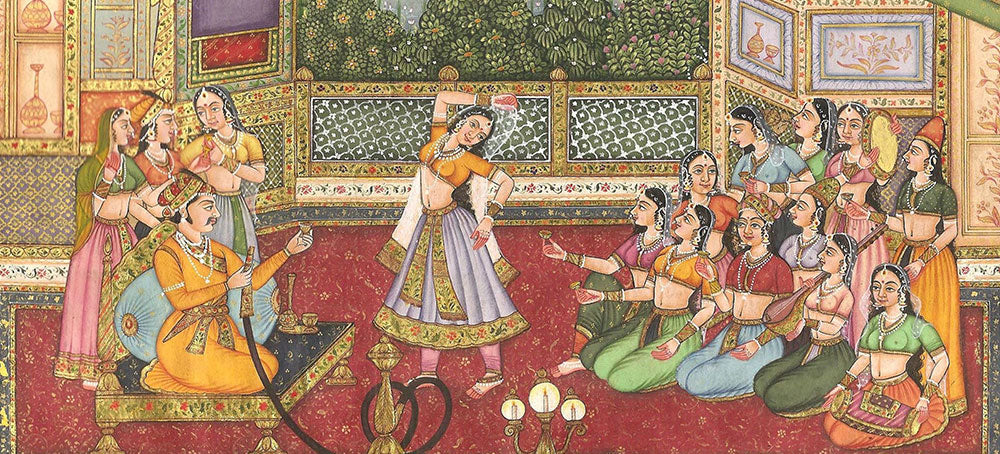The historical narrative must be rewritten since women in history have been largely put to shade, their contributions denied, and their part underestimated. While the Mughal Empire was a great and artful entity, its women were multi-faceted and their contributions hold immense significance in the historical narratives. Thus, we will take a closer look at the Mughal empire and depict the vital importance of Royal Women within it in the complex social, political, and cultural axes.
Introduction
The mighty Mughal Empire was founded during the 16- century in India, and it was famed for its magnificence and luxury. Women were fondly surprised by even a great amount of luxury and power among the rulers and were not going to be left behind in writing history.
The women in Mughal society
Status and Roles
Contrary to the prevalent body of misconception, the Royal women of Mughal society were very conscious and had a strong influence on the decision-making process. Although the system entailed patriarchal structures, the women succeeded in creating the platforms for the realization of their agency in their relationship with family members and society.
Influence and Power
In fact, unlike what people usually imagine, behind the harem walls the royal women also controlled soft power to some degree, which helped them shape political decisions as well as exert intrigue in the court. They were together advisors on administrative matters, with their views being seriously considered.
Royal Women
Harem Dynamics
The harems were a place of intricate networks and alliances of which the royal women were the fundamentals. Nevertheless, they were often used in diplomatic relations and negotiations. All the same, the harem was not simply a place of seclusion or a place where power was often exercised.

Political Intrigue
Likewise, the queen ladies became a symbol of power breaking the traditional gender barriers as they took part vigorously in the government roles and military affairs. Standing behind the greatness of the empire was the wisdom and diplomatic sagaciousness of these leaders.
Cultural Patronage
Besides politics, queens and princesses helped vanguard the arts and literature, as well as, maintain a prosperous cultural life. These princes’ sponsorship fostered creative activity and knowledge eliciting greatly contributed to the cultural richness and diversity of the Mughal Empire.
Women in Administration
Administrative Positions
Regardless of their male dominance, for instance, some women like them were given a chance to hold prominent administrative positions. For instance, Empress Mumtaz Mahal was not only a charitable lady but she influenced the Mughal Empire and she was the force behind Architectural projects.
Economic Participation
The value of Royal Women’s economic impeachment expanded well beyond domestic activities. Most merchants and craftsmen brought a vibrancy which was the driving force of the Roman Empire’s economy. This spirit of theirs that gave a tangible expression of the trade and merchandise was responsible for the economic prosperity.
Education and Arts
Educational Opportunities
Even though that seemed impossible in this period, Mughal women were able to acquire education with the help of some similar schools that taught literature, music, and sciences. It is thus likely that the intellectual empowerment associated with such endeavors allowed women to get involved in more scholarly work and developed arguments.
Artistic Expression
Their presence was all over the Mughal court, they performed arts that were exceptional as most of them were artistically talented, being good at poetry, painting, and dancing. Once confined by the norms of classical style, their creative instincts soared, leaving us with lasting masterworks engraved in the annals of art history.
Religion and Rituals
Religious Endowments
Women religiously patronized the support of mosques, madrasas, and Sufi mausoleums. These traditions of piety and devotion gained manifestations through the acts of charity and philanthropy which in return led to the formation of a religious landscape in the empire.
Ritual Participation
In those dire circumstances, women were constrained only by their customary restrictions, and nevertheless, they expressed their holistic spirituality/spiritual commitment/spiritual devotion through their participation in religious practices and ceremonies. The vivacious worship of the Mughals integrated new and old religions, adding their self-made faith to the religious blend of the Mughal society.
Challenges and Resistance
Socio-cultural Constraints
Nevertheless, women reached outside the traditional space to control, at the same time, they were constrained within socio-cultural boundaries such as Purdah and traditional customary gender norms. Such prisons hindered women’s freedom- of- movement and autonomy, but the span of their lives showed their amazing resilience. They kept adapting to the shifting circumstances.
Female Agency
Women, in such situations, proved that they have the power to act. This came in the form of clandestine operations that stepped outside of the norms and limits of society. If it was done through open defiance or stealthy rebellion, it made sure that the female gender would have its autonomy and would engrave it even in Mughal history.
Legacy and Influence
Cultural Legacy
The ingenuity of Mughal Royal women lives on through the architectural landmarks, the literary wonders, and the rich splendor of the arts. They go above and beyond the limitations of time, distilling a cultural imprint that will remain embedded in the ethos of the Indian subcontinent. Write the writer in its correct form.
Feminine Influence
Not only did Mughal Royal women begin the legacy of tangible heritages, but they also remained as the inspiration for the forthcoming generations, becoming a source of brave stories, creative thoughts, and power. The tales they tell not only make Royal women across the globe exult but also bring them hope and inspire them.
Conclusion
Lastly, the role of Royal women in the Mughal period was numerous and deep which extended from politics, and culture to the whole life of society. Despite the difficulties, women exemplified the kind of courage and determination that would go down in history to forever change the fortunes of all the emperors and to become a source of inspiration to future generations too. Their narratives are employed as a tool to underline what history has identified as a characteristic of Mughal women and how they were able to overcome and endure the circumstances.
—
FAQs
- Was there any law existing for the maidens of the Mughal Empire?
- Mughal society, though, was painted as patriarchal, Royal women had legal rights ascribed to them that allowed them to own property and receive whatever mode of wealth their studs had, but with limitations.
- Is there any room for the outside world and does every woman live in the harem?
- Indeed, although, women of the harem represented the royal class, the typical female who performed economic duties and represented the family management were the common women.
- We should know whether the motherland women of the Mughals were learners in their mother’s wombs or not.
- Some Mughal women, specifically those in noble families, received proper education where they studied literature, music, and arts.
- Was it the Mughal woman who left an imprint on art and culture?
- Mughal Royal women played a tremendous role in the growth of arts as they brought many cultures together to create a rich social environment in the process of developing literature, music, and architecture.
- How were the lives of Muslim women during the Mughal empire affected by the Mughal level?
- Mughal Royal women had to struggle with socio-cultural boundaries that expected so-called purdah and gender norms, but despite that, they were allowed to form a hybrid cultural identity. demonstrated their ability to overcome these circumstances by keeping their spirit and owning up to their power.

